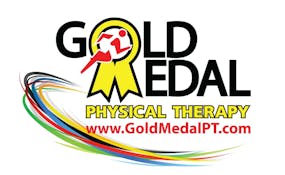Summer-Proof Your Back:
Easy Core Exercises for Pain-Free Travel and Outdoor Fun
Summer is here! Time for road trips, beach days, and backyard projects. But before you start
lifting heavy luggage or moving patio furniture, let’s talk about keeping your back happy and
healthy. Your back works hard during summer activities. Long car rides, heavy suitcases, and yard work
can all stress your spine. The good news? A strong core is your best defense against back pain.
Why Your Core Matters More Than You Think
Think of your core like a natural back brace. These muscles wrap around your middle and
support your spine all day long. When your core is weak, your back muscles have to work
overtime. That’s when pain strikes.

Your core includes more than just abs. It’s actually four main muscle groups:
● Deep abdominal muscles
● Back muscles along your spine
● Pelvic floor muscles
● Diaphragm (your breathing muscle)
Simple Core Exercises You Can Do Anywhere:
The Dead Bug
Lie on your back with knees bent at 90 degrees. Slowly lower one arm overhead while
extending the opposite leg. Return to start. Do 10 reps each side.
● Why it works: Teaches your core to stay stable while your arms and legs move.
Modified Plank
Start on your knees and forearms. Keep your body straight from knees to head. Hold for 15-30
seconds.
● Why it works: Builds strength in all your core muscles at once.
Bird Dog
Start on hands and knees. Lift opposite arm and leg at the same time. Hold for 5 seconds. Do 8
reps each side.
● Why it works: Improves balance and teaches your back and core to work together.
Smart Lifting for Summer Activities
Whether you’re loading the car or moving a grill, proper lifting saves your back.
The Safe Lifting Checklist:
● Get close to what you’re lifting
● Bend your knees, not your back
● Keep the object close to your body
● Lift with your legs
● Don’t twist while holding something heavy
Pack Smart for Travel:
● Use a suitcase with wheels
● Pack heavy items in smaller bags
● Take breaks during long drives to stretch
Beat Travel Back Pain
Long car rides are tough on your back. Here’s how to arrive feeling good:
Before You Drive:
● Adjust your seat so your knees are slightly higher than your hips
● Place a small pillow behind your lower back
● Make sure you can reach the pedals without stretching
During the Trip:
● Stop every hour to walk and stretch
● Do simple stretches at rest stops
● Stay hydrated (dehydration makes muscles tight)

Quick Stretches for Busy Days
1. Cat-Cow Stretch – On hands and knees, arch your back up like a cat, then let it sag
down. Do 10 slow movements.
2. Knee-to-Chest – Lying down, pull one knee toward your chest. Hold for 20 seconds
each leg.
3. Child’s Pose – Sit back on your heels with arms reaching forward. Hold for 30 seconds.
When to See a Physical Therapist
Most back pain gets better with simple exercises and smart habits. But see a PT if you have:
● Pain that lasts more than a few days
● Pain that shoots down your leg
● Numbness or tingling
● Pain after a fall or injury
Your Summer Back Health Action Plan
1. Start small: Do 5 minutes of core exercises three times a week
2. Practice good lifting: Use your legs, not your back
3. Move often: Don’t sit in one position too long
4. Listen to your body: Rest when you need to
Remember, preventing back pain is much easier than treating it. A few minutes of daily core
work can save you weeks of discomfort later.
This summer, make your back health a priority. Your future self will thank you when you’re still
enjoying activities pain-free!
References
1. American Physical Therapy Association. (2023). “Core Stability and Back Pain Prevention.” APTA
Guidelines. https://www.apta.org
2. McGill, S. (2016). “Low Back Disorders: Evidence-Based Prevention and Rehabilitation.” Human
Kinetics. https://www.humankinetics.com
3. National Institute of Occupational Safety and Health. (2023). “Ergonomics and Musculoskeletal
Disorders.” CDC Publication. https://www.cdc.gov/niosh/topics/ergonomics/
4. Hides, J., et al. (2022). “Core Muscle Training for Low Back Pain.” Journal of Physical Therapy
Science, 34(8), 542-548. https://www.jstage.jst.go.jp/browse/jpts
5. Harvard Health Publishing. (2023). “Core Exercises: Why You Should Strengthen Your Core
Muscles.” Harvard Medical School. https://www.health.harvard.edu/staying-healthy/coreexercises-5-workouts-to-tighten-your-abs-strengthen-your-back-and-improve-balance
6. Mayo Clinic. (2023). “Back Pain Prevention: Lifestyle Strategies.” Mayo Foundation for Medical
Education and Research. https://www.mayoclinic.org/diseases-conditions/back-pain/indepth/back-pain/art-20044526


